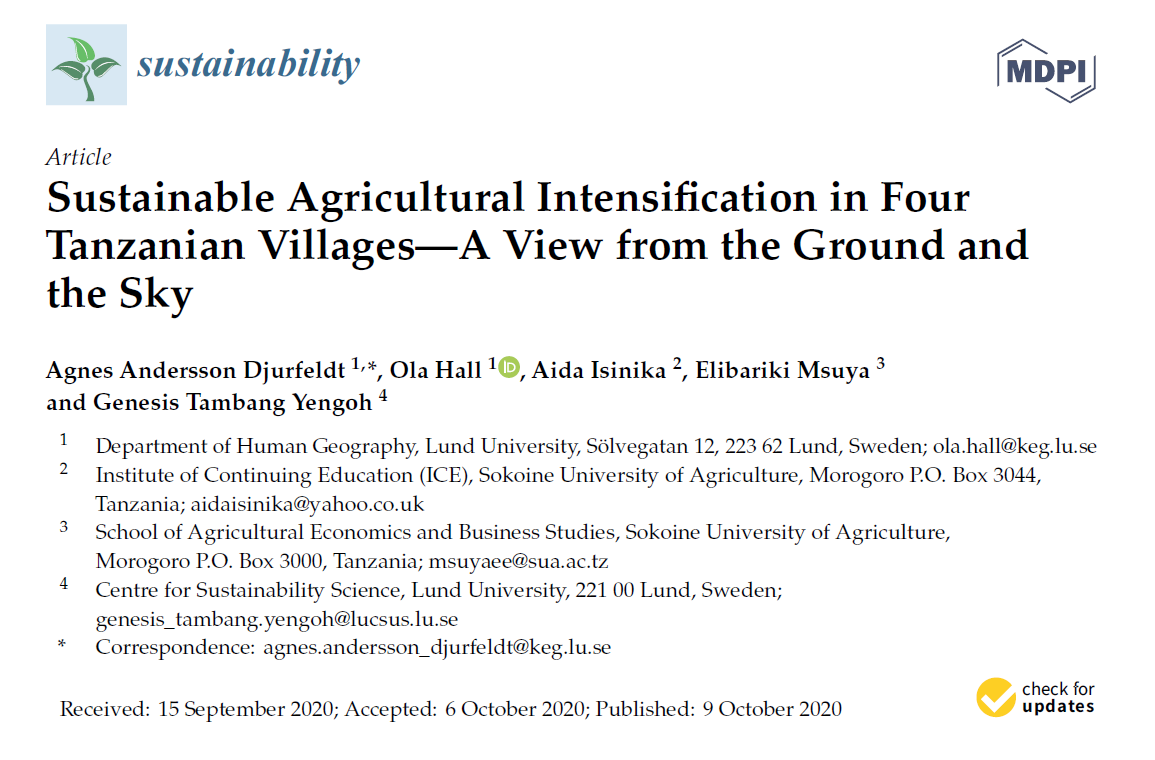Abstract: Agricultural intensification based on smallholders is among many economists viewed
as a necessary developmental path to ensure food security and poverty reduction in sub-Saharan
Africa. Increasingly, a one-sided focus on raising productivity in cereals has been questioned on
environmental grounds, with the concept of sustainable agricultural intensification (SAI) emerging
from the natural sciences as a way of advancing environmental and social needs simultaneously.
SAI approaches have, however, been criticized for being both conceptually and methodologically
vague. This study combines socioeconomic survey data with remotely sensed land productivity data
and qualitative data from four villages in Tanzania. By triangulating and comparing data collected
through ground level surveys and ground-truthing with remote sensing data, we find that this
combination of methods is capable of resolving some of the theoretical and methodological vagueness
found in SAI approaches. The results show the problems of relying on only one type of data when
studying sustainable agricultural intensification and indicate the poor environmental outcomes of
cereal monocropping, even when social outcomes may be forthcoming. We identify land use practices
that can be considered both socially and environmentally sustainable. Theoretically, we contribute to
a further problematization of the SAI concept.
Lund-2.pdf
PDF 1.04 MB

